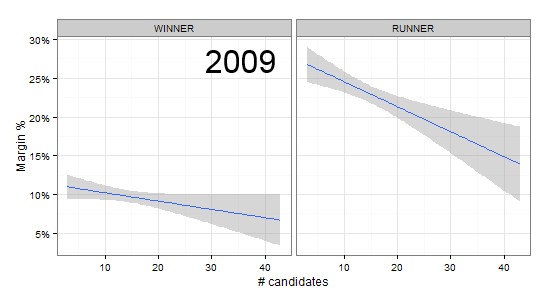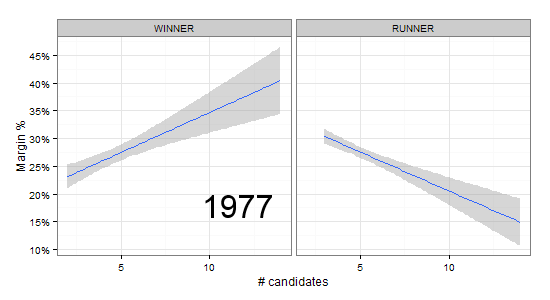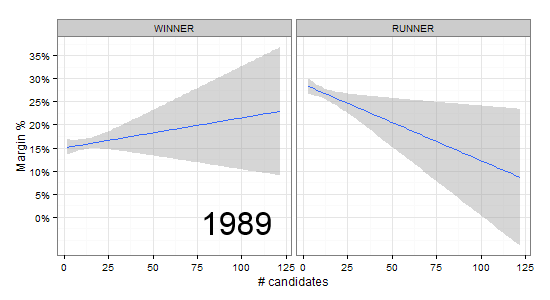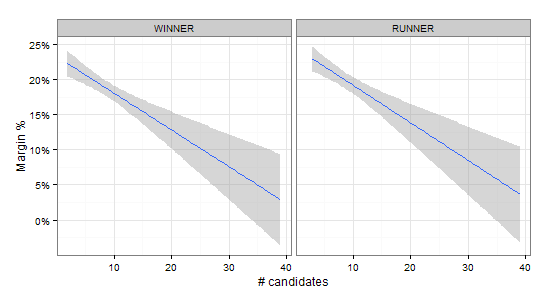What happens if a constituency has a large number of candidates? Do the votes get split, with the winner winning with a lower margin?
For example, if there are several hundreds of candidates like at Nalgonda or Belgaum in 1996, do the winners tend to win with relatively low margins? Is the CPI’s 9% margin at Nalgonda or JD’s 11% margin at Belgaum relatively low?
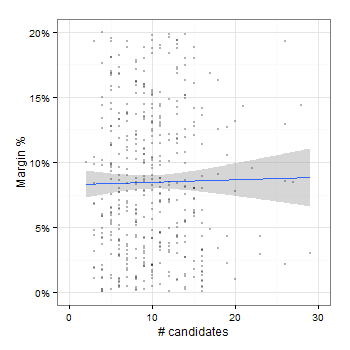
What we find is that when there are more candidates, the margin for the winner actually increases slightly, rather than reducing. It’s almost as if the increased number of candidates confuses the voters and drives them towards the leading or strongest candidate. In any case, the winner’s margin is certainly unaffected by an increase in number of candidates.

So at least in 2004, increasing the number of candidates was a good strategy for the party that has a strong candidate.
What about for other years? In 2009, the pattern is similar. The winner margin dipped mildly with increase in number of candidates. The runner-up margin dipped dramatically with an increase in margin.
In fact, in a number of elections, this pattern was stronger, for example in 1977, 1984 and 1989.
However, in the 1980 elections, the number of candidates impacted the winner and runner-up margins equally. The 1951 and 1957 elections showed a similar characteristic.
In recent times, an increase in number of candidates appears to favour stronger candidates. It may, in fact, be a viable leading party strategy to introduce more candidates into the elections to split the votes of the runner-up, ensuring a stronger win.

